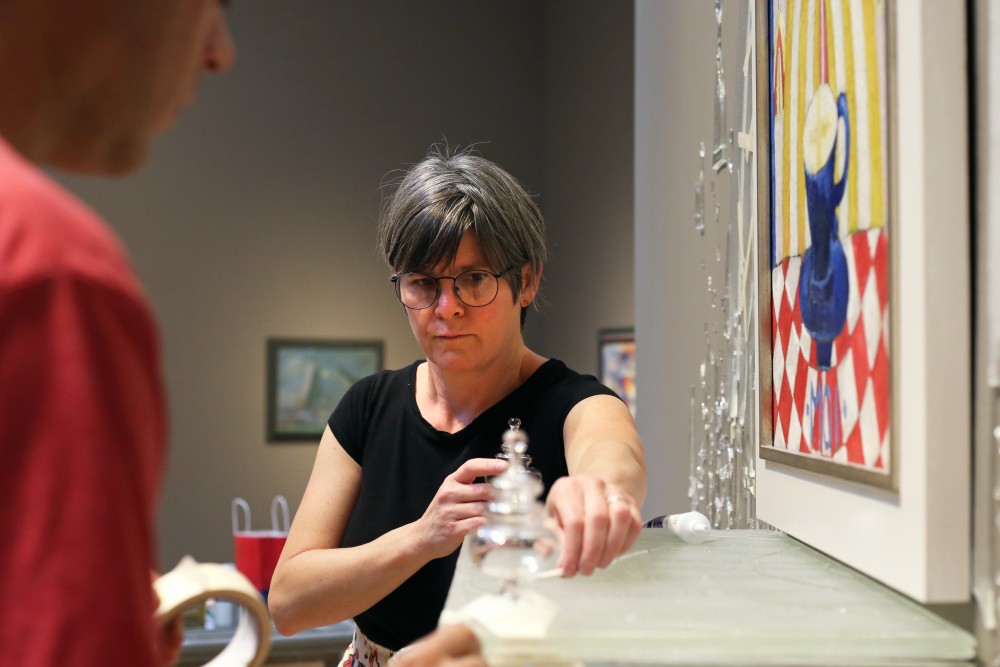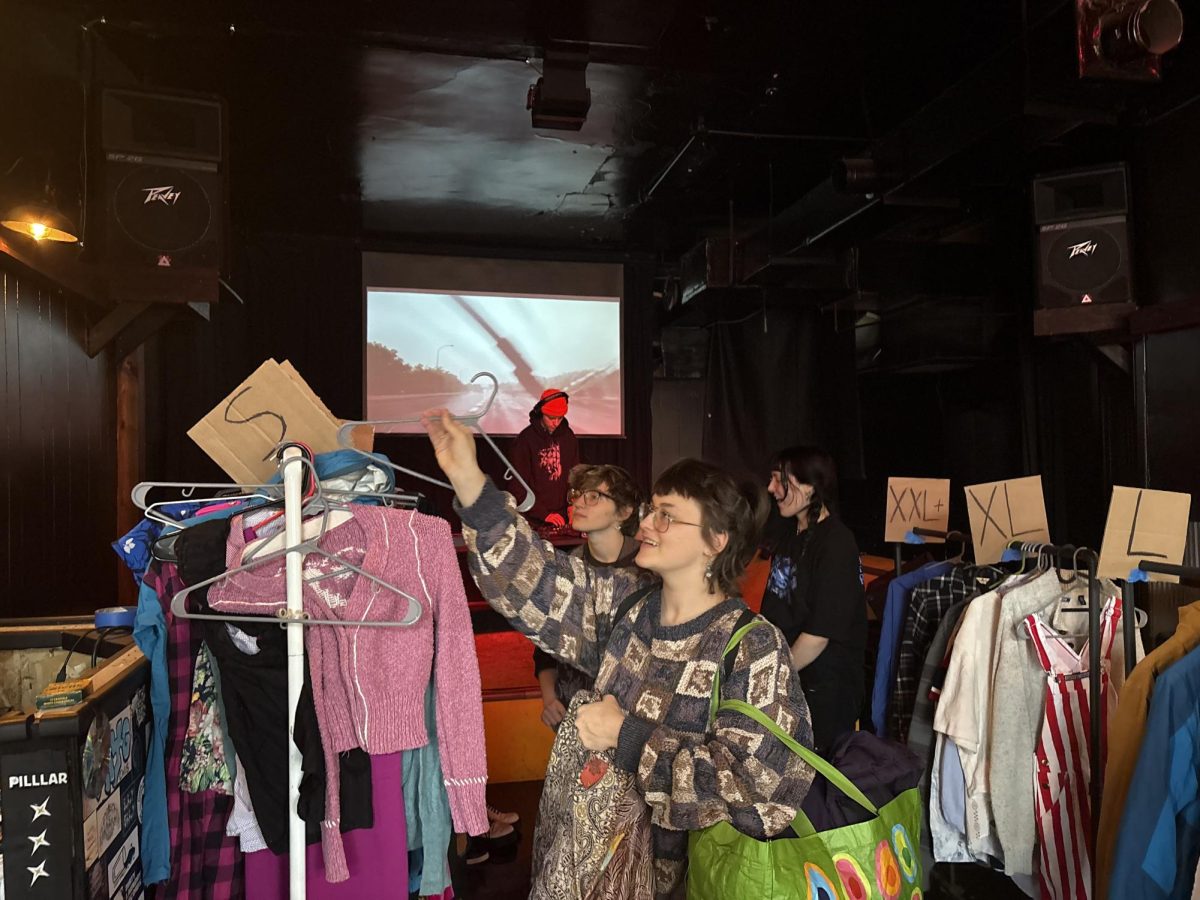Working for nearly 12 hours a day in the Weisman Art Museum galleries last week, Beth Lipman installed “One Portrait of One Man,” an original glass piece inspired by Marsden Hartley’s painting “One Portrait of One Woman.” Lipman, who lives in Sheboygan Falls, Wisconsin, began working with WAM as part of a commissioned artist program.
“When we re-opened the museum in 2011, we started a program that we called ‘Sympathies,’ in which we commissioned artists to do a new piece in sympathy with the collection,” said Lyndel King, director and chief curator of the WAM.
She went on to describe the first time she saw Lipman’s work.
“I walked into this room … it was completely full of a table that looked like a Dutch still life had exploded into giant pieces of glass, and they were falling off the table, and they were kind of allover in a chaotic way,” King said. “But you knew that it was a reimaging of a 17th century Dutch still life.”
Lipman’s work has been described as re-imaginings of historic and still life paintings which capture a moment in time. She primarily works in glass and uses traditional methods like glass-blowing and fusing to make her pieces.
Her work responds to the specific piece she finds inspiration from and is dictated by the restraints of opportunity – such as deadlines, size of the exhibition room, etc. Common themes in her work include mortality, materiality and recurring societal issues since the beginning of the still life.
“I’m investigating aspects of material culture within the work, and I also use research and history to kind of parallel different times to the [present],” Lipman said.
“I was interested in [Lipman’s] interest in mementos and still lives and table studies, how it related to the body and to memory,” Diane Mullin said, WAM’s senior curator.
Mullin contacted Lipman to come look at Hartley’s works, a collection she considers one of the WAM’s most important.
“We thought maybe she would do a table, but as she got to know the collection more, she became really interested in Hartley himself,” Mullin said.
Unlike Lipman’s past works which take a year or two to complete, “One Portrait of One Man” was the result of Lipman’s dedication and immersion into the life and history of Hartley by exploring his visual and written works as well as research — seven years of it.
“I just kind of fell in love with his whole body of work here,” Lipman said. “It was really a luxury to be able to do that, I have to say.”
In response to Hartley’s “One Portrait of One Woman,” Lipman was challenged by finding a way to engage with the painting and the history without competing or necessarily supporting it with her installation. She chose to incorporate bits of color — something she almost never does — which she pulled from the painting to highlight the glass pieces which represent historical objects of Hartley’s life. A blue book and a New York City transit ticket are among them.
“I just felt like I needed continuity between the painting, and I needed to find a way to connect the painting to the sculpture,” she said. “The cabinet is essentially a body in some ways. It felt very much like a classic, anatomical illustration where the lungs are one color and the heart is another color.”
Aside from the history and research, the physical process of creating installations is incredibly important to Lipman. She constructs the piece in her studio, mapping out which objects go where, deconstructs it, and then reconstructs the pieces again at the exhibition site. The finished piece is always a little different than what was arranged in her studio.
Lipman finished installing “One Portrait of One Man” on Friday, just before her flight back home. She described the moment when her colleagues hung Hartley’s painting above the glass cabinet.
“That was really a spectacular moment … it was that moment in illumination that it was working, it was clear to everyone that it was a true marriage between the pieces,” she said.








